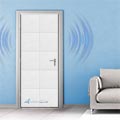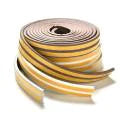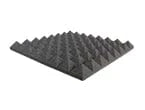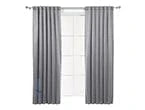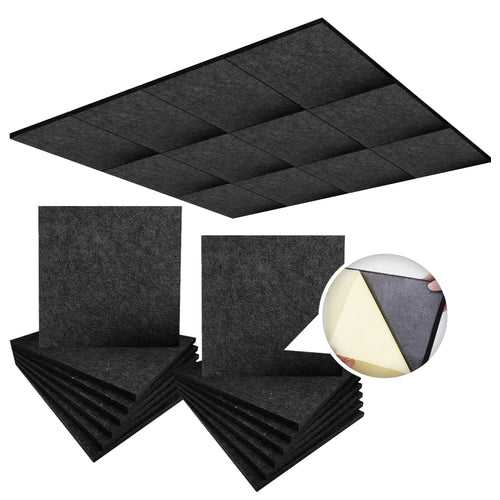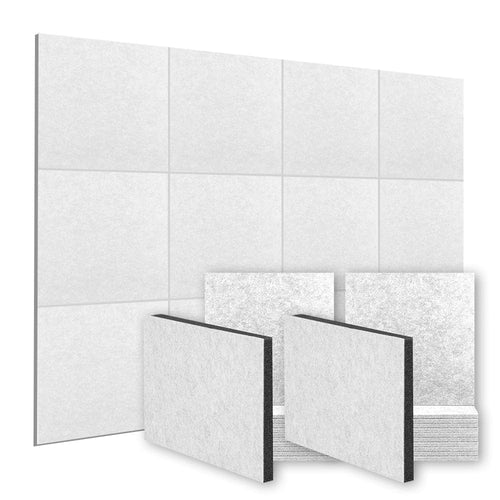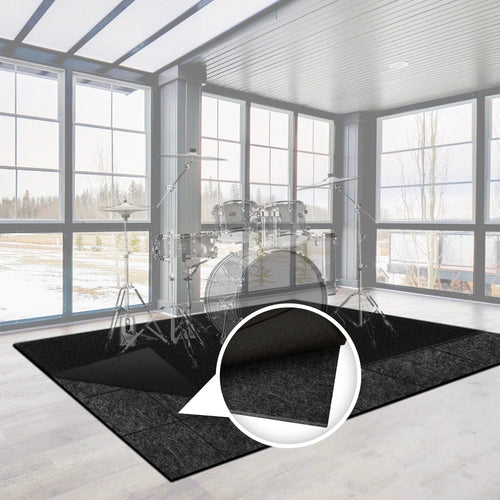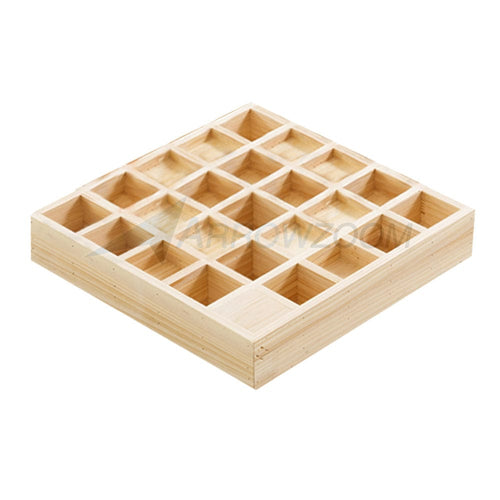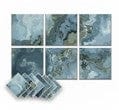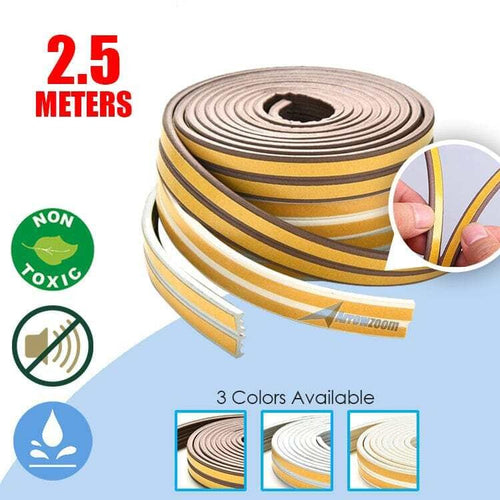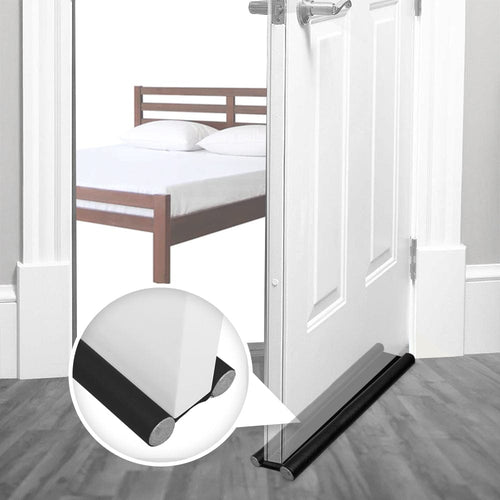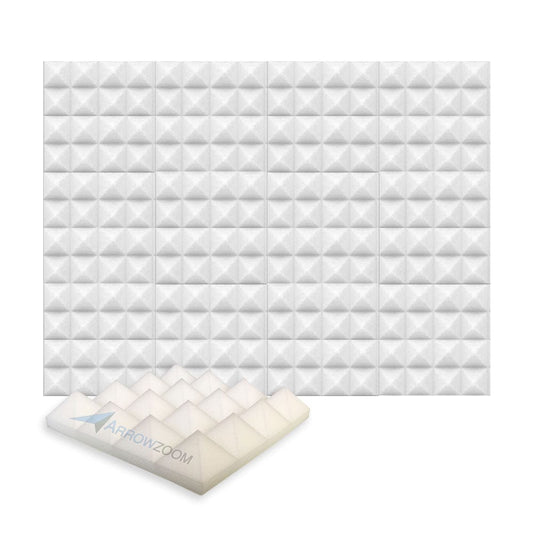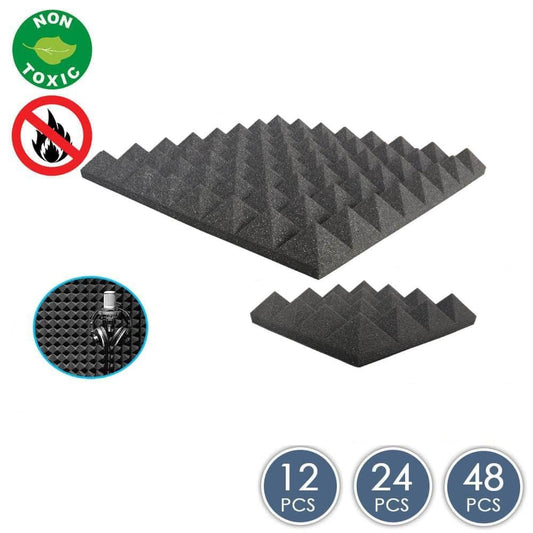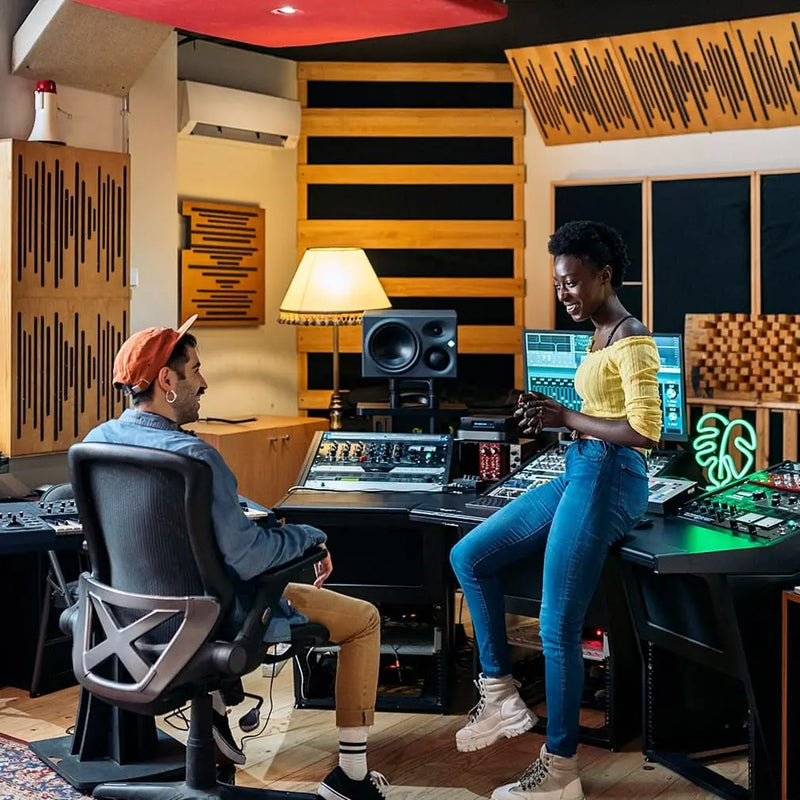A-Z Acoustical Dictionary
Absorption
The way materials soak up sound waves and turn them into heat energy. 🔥 It helps control echoes and reverberation in a room.
Amplitude
The maximum height or depth of a sound wave, which determines how loud or soft the sound is. 🔊
Architectural Acoustics
The science of designing buildings and spaces with good sound quality and noise control. 🏢 It's all about making sure the acoustics are just right!
Auditorium Acoustics
The study of how sound behaves in theaters, concert halls, and other performance spaces. 🎭 It's all about creating the perfect acoustic experience for the audience.
Background Noise
Those annoying sounds you don't want to hear, like traffic or air conditioning. 🚗 🌬️ They can make it hard to focus or enjoy the main audio.
Boundary Element Method
A fancy computational method used to model how sound waves interact with surfaces and boundaries. 💻 It's like a virtual acoustic simulator!
Concert Hall Design
The art of creating the perfect acoustic environment for live music performances. 🎵 It's all about shaping the space to make the sound as magical as possible.
Critical Distance
The distance from a sound source where the direct and reverberant sound levels are equal. 🎤 It's an important concept for designing good acoustics in a room.
Decibel (dB)
The unit used to measure how loud or soft a sound is. 📏 The higher the decibel level, the louder the sound.
Diffraction
The way sound waves bend and spread around edges and obstacles. 🌊 It's like when you hear someone's voice coming from behind a wall.
Diffusers
Special acoustic panels or surfaces that scatter sound waves in different directions. 📐 They help prevent harsh echoes and create a more natural sound environment.
Direct Sound
The sound that travels straight from the source to your ears, without any reflections. 🔩 It's the purest form of the sound you hear.
Doppler Effect
The apparent change in pitch or frequency of a sound as the source or listener moves. 🚗 It's why a car horn seems higher-pitched as it approaches you.
Early Reflections
The first few sound reflections that reach your ears after the direct sound. 🔄 They help create a sense of spaciousness and envelopment in a room.
Finite Element Method
Another fancy computational technique used to model the behavior of sound waves in complex geometries. 👩💻 It's like building a virtual acoustic playground!
Frequency
The number of sound wave cycles per second, measured in Hertz (Hz). 🔄 It determines whether a sound is high-pitched or low-pitched.
Image Source Method
A clever way of simulating sound reflections by using virtual "image sources." 🔮 It's like having a bunch of imaginary speakers in a room.
Impedance
The resistance of a material to the flow of sound energy. 🛑 It plays a role in how much sound gets absorbed or transmitted through a surface.
Impact Insulation Class (IIC)
A measure of how well a floor or ceiling blocks impact sounds like footsteps. 👣 The higher the IIC rating, the better the insulation.
Intensity
The amount of sound energy passing through a given area. 💥 It's related to how loud or powerful a sound is.
Materials and Finishes
The different types of surfaces and materials used in a room or building that affect the acoustics. 🧱 They can absorb, reflect, or diffuse sound waves in various ways.
Modeling and Simulation
Using computer programs and algorithms to predict and visualize how sound will behave in a space. 🖥️ It's like having a virtual acoustic crystal ball!
Noise
Unwanted or undesirable sound that's annoying or disruptive. 🔇 It can come from things like traffic, machinery, or loud neighbors.
Noise Criteria (NC) Curves
A set of curves used to determine acceptable background noise levels in different types of spaces. 📈 They help ensure a comfortable acoustic environment.
Panel Absorbers
Flat or curved acoustic panels designed to absorb sound energy at specific frequencies. 📐 They're often used to reduce echoes and reverberation in a room.
Period
The time it takes for one complete cycle of a sound wave. ⏱️ It's related to the frequency of the sound.
Porous Absorbers
Materials with tiny holes or pores that absorb sound energy by friction. 🧽 Examples include acoustic foam, carpets, and curtains.
Public Address Systems
Sound systems used to amplify and distribute speech or music in large spaces like stadiums or airports. 📢 They need to be designed with good acoustics in mind.
Ray Tracing
A computational technique that simulates the behavior of sound waves by tracing their paths as rays. 🔦 It's like shining a bunch of tiny flashlights around a room.
Reflection
When a sound wave bounces off a surface, creating echoes or reverberation. 🏐 It's like throwing a ball against a wall and having it bounce back.
Resonance
The amplification of sound waves at certain frequencies due to the natural vibration of an object or space. 🎻 It's what gives musical instruments their unique tones.
Reverberation
The persistence of sound in a space due to multiple reflections from surfaces. 🔊 It can create a sense of spaciousness or make speech harder to understand.
Room Modes
The specific frequencies at which sound waves resonate or amplify in a room due to its dimensions. 🎼 They can cause uneven bass response and acoustic issues.
Sound Pressure
The fluctuations in air pressure caused by sound waves. 💨 It's what our ears detect and interpret as sound.
Sound Reinforcement
The use of amplification and speaker systems to enhance and distribute sound in a space. 🎤 It's essential for concerts, theaters, and large venues.
Sound Transmission Class (STC)
A rating that describes how well a building partition (like a wall or floor) blocks airborne sound. 🔐 The higher the STC, the better the soundproofing.
Sound Waves
The vibrations that travel through a medium (like air or water) and carry sound energy. 🌊 They're what allow us to hear sounds.
Speech Intelligibility
How clearly and easily spoken words can be understood in a given acoustic environment. 💬 It's important for classrooms, auditoriums, and public spaces.
Standing Waves
Stationary sound waves that form due to interference between reflections in a space. 🌊 They can create areas of amplified or canceled sound.
Studio Acoustics
The design and treatment of recording studios to create an optimal acoustic environment for recording music or audio. 🎵 It's all about capturing the perfect sound.
Transmission Loss
A measure of how well a material or structure reduces the transmission of sound energy from one side to the other. 🚫 It's important for soundproofing and noise control.
Wave Propagation
The way sound waves travel and spread through a medium, like air or water. 🌊 It's influenced by factors like temperature, humidity, and obstacles.
Wavelength
The distance between two corresponding points on adjacent sound waves. 📏 It's related to the frequency of the sound.
Soundproofing FAQs
Frequently Asked Questions
How do I soundproof my wall against noisy neighbours? 🤫
How do I soundproof my wall against noisy neighbours? 🤫
Soundproofing aims to prevent sound from entering or leaving a room, like blocking noise from those pesky neighbours. For more tips, check out our guide on soundproofing against noisy neighbours! 📖
How many Acoustic Panels Do I Need?
How many Acoustic Panels Do I Need?
The first step is going to be installing acoustic panels on your walls. These reduce the reverberations and echoes in the space.
Use our Free Tiles Calculator to find out
How do you install soundproofing? 🔧
How do you install soundproofing? 🔧
There are two main options for installing our DIY soundproofing solutions, and we're here to support you every step of the way!
DIY Installation:
All of our systems are DIY-friendly, saving you on installation costs.
80% of customers install the systems themselves because we’ve made it easy!
We provide simple, step-by-step installation guides and videos for a hassle-free experience.
Our technical team is ready to answer any questions and offer support. We're here for you! 🤗
Use a Local Contractor:
You're on your way to a noise-free home! If DIY isn’t an option, consider hiring a local tradesperson.
We simplify the process by communicating directly with your tradesperson throughout the installation.
Visit our installation page for more details! 📞
What's the difference between impact and airborne noise? 🔊
What's the difference between impact and airborne noise? 🔊
1. Airborne Noise
- This travels through the air, like conversations, TV sounds, or barking dogs. When sound waves hit a building, they cause it to vibrate, transmitting through the structure.
2. Impact Noise
- This results from physical impacts on buildings, such as footsteps, slamming doors, or moving furniture. Impact noise can be harder to isolate, as these vibrations are stronger and travel further through dense materials.
What are decibels? 📏
What are decibels? 📏
Decibels are measured logarithmically (not as a percentage) . This means that every increase of 10dB on the scale is a tenfold increase in sound pressure level (SPL) . Near silence is 0dB 🤫, while a sound at 10dB is ten times louder!
- 30-40 dB = Soft music, whisper 🎶
- 60-80 dB = Office noise, traffic 🚗
- 85-100 dB (HARMFUL) = Subway, shouted convo, chainsaw ⚠️
- 100-140 dB (DANGEROUS) = Chainsaw, loud concert, racing, shooting range 🚨
Is everything in stock and ready to ship? 📦
Is everything in stock and ready to ship? 📦
In stock, ships in 1-2 business days! Learn More
Where Is My Order?
Where Is My Order?
Track your order: Check your email or visit our Tracking Page.
FREE & FAST GLOBAL SHIPPING 🚚
30 DAYS RETURNS ✅
24/7 Live Support 📞
FREE & FAST GLOBAL SHIPPING 🚚
30 DAYS RETURNS ✅
24/7 Live Support 📞
FREE & FAST GLOBAL SHIPPING 🚚
30 DAYS RETURNS ✅
24/7 Live Support 📞
FREE & FAST GLOBAL SHIPPING 🚚
30 DAYS RETURNS ✅
24/7 Live Support 📞
FREE & FAST GLOBAL SHIPPING 🚚
30 DAYS RETURNS ✅
24/7 Live Support 📞
FREE & FAST GLOBAL SHIPPING 🚚
30 DAYS RETURNS ✅
24/7 Live Support 📞
FREE & FAST GLOBAL SHIPPING 🚚
30 DAYS RETURNS ✅
24/7 Live Support 📞
FREE & FAST GLOBAL SHIPPING 🚚
30 DAYS RETURNS ✅
24/7 Live Support 📞
FREE & FAST GLOBAL SHIPPING 🚚
30 DAYS RETURNS ✅
24/7 Live Support 📞
FREE & FAST GLOBAL SHIPPING 🚚
30 DAYS RETURNS ✅
24/7 Live Support 📞
FREE & FAST GLOBAL SHIPPING 🚚
30 DAYS RETURNS ✅
24/7 Live Support 📞
FREE & FAST GLOBAL SHIPPING 🚚
30 DAYS RETURNS ✅
24/7 Live Support 📞



